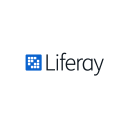Behavioral targeting transforms how businesses connect with their audience. This article explores practical strategies to personalize content based on user actions, boosting engagement and conversions.
Understanding Behavioral Targeting
Behavioral targeting uses data from user interactions to deliver tailored content. It analyzes browsing history, clicks, and purchase patterns to create personalized experiences.
- Key benefits: Improved user engagement, higher conversion rates, increased customer loyalty
- Data sources: Website interactions, app usage, search queries, purchase history
Implementing User Behavior Tracking
Effective behavioral targeting starts with robust data collection. Implement these tracking methods to gather valuable user insights:
- Web analytics tools: Google Analytics, Adobe Analytics
- Heat mapping software: Hotjar, Crazy Egg
- Customer Data Platforms (CDPs): Segment, Tealium
Ensure compliance with data privacy regulations like GDPR and CCPA when collecting user data.
Segmenting Your Audience
Divide your audience into meaningful segments based on behavior patterns. This allows for more targeted content delivery.
Common Segmentation Criteria:
- Purchase history
- Content preferences
- Site navigation patterns
- Device usage
- Geographic location
Use A/B testing to refine your segmentation strategy and improve content personalization.
Creating Tailored Content Strategies
Develop content that resonates with each segment’s interests and needs. Consider these approaches:
- Dynamic website content: Adjust homepage features based on user preferences
- Personalized email campaigns: Send targeted offers and product recommendations
- Custom product suggestions: Use collaborative filtering to recommend relevant items
- Adaptive search results: Prioritize results based on past user behavior
Regularly update your content strategies based on performance metrics and changing user behaviors.
Measuring and Analyzing Campaign Performance
Track key metrics to gauge the success of your behavioral targeting efforts:
- Conversion rate: Percentage of users who complete desired actions
- Click-through rate (CTR): Ratio of clicks to impressions
- Time on site: Duration users spend engaging with content
- Bounce rate: Percentage of single-page visits
Use tools like Google Analytics or Adobe Analytics to monitor these metrics and identify areas for improvement.
A/B Testing for Optimization
Implement A/B tests to refine your targeting strategies:
- Test different content variations for each segment
- Experiment with various CTAs and landing pages
- Compare personalized vs. non-personalized experiences
Continuously iterate based on test results to enhance targeting effectiveness.
Leveraging Machine Learning and AI
Incorporate advanced technologies to boost behavioral targeting capabilities:
- Predictive analytics: Forecast user behavior and preferences
- Natural Language Processing (NLP): Analyze user interactions for deeper insights
- Recommendation engines: Suggest products or content based on user history
AI-powered tools can process vast amounts of data quickly, enabling real-time personalization.
Practical Applications
Examples of AI-enhanced behavioral targeting:
- Chatbots that adapt responses based on user behavior
- Dynamic pricing models adjusted to individual user preferences
- Content recommendations that evolve with user interests
Addressing Privacy Concerns
Balance personalization with user privacy to build trust:
- Implement transparent data collection policies
- Provide clear opt-out options for users
- Use data anonymization techniques to protect user identities
- Comply with regulations like GDPR, CCPA, and emerging privacy laws
Educate users on how their data improves their experience and offer control over their information.
Building Trust Through Transparency
Actions to enhance user confidence:
- Create a detailed privacy policy in plain language
- Implement a preference center for users to manage their data
- Regularly audit and update data handling practices
Conclusion
Behavioral targeting offers powerful tools to enhance user experience and drive business growth. By collecting relevant data, segmenting audiences effectively, and creating tailored content, businesses can significantly improve engagement and conversions.
Remember these key takeaways:
- Implement robust tracking methods while respecting user privacy
- Segment your audience based on meaningful behavioral criteria
- Create personalized content strategies for each segment
- Continuously measure and optimize your targeting efforts
- Leverage AI and machine learning for advanced personalization
As technology evolves, so will the possibilities for behavioral targeting. Stay informed about new developments and always prioritize user experience and privacy in your targeting strategies.

















































